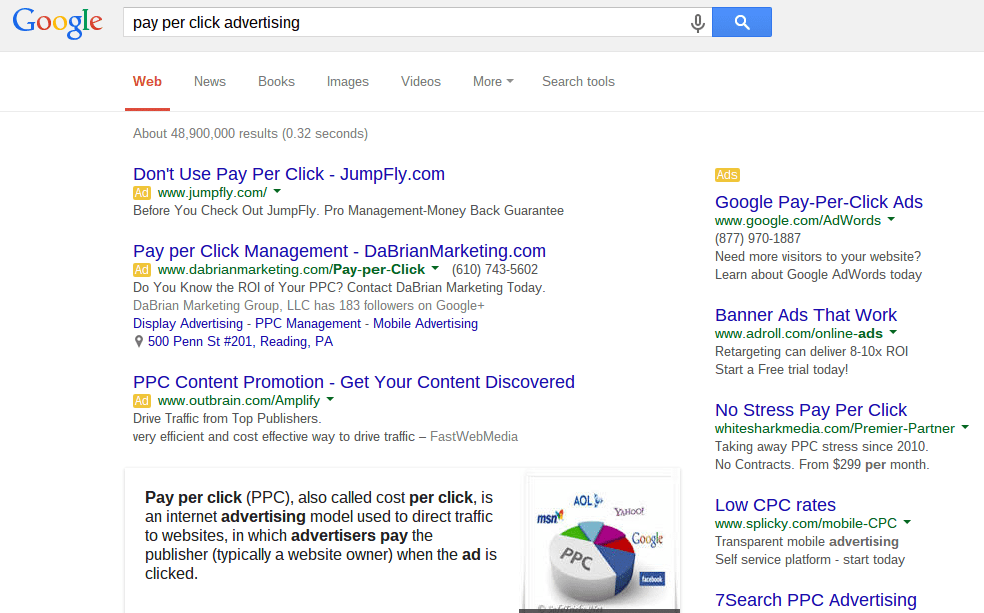
Pay per Click (PPC) are the paid ads the show above and and along side of the search results, when you use Google, Bing, or other search engines. PPC can be a very powerful form of advertising. Google and Microsoft often brag about its amazing reach and how cost-effective it is. However, like everything else in business, if your PPC advertising efforts are aimless, then the profitability will most likely not be there. In order to not waste your time and money, here are 3 Steps (Strategy, Implement, and Optimize) to consider prior to running a Pay per Click Campaign.
1) Strategy
First ask the all important question: Why? What is your purpose of advertising online? This begins the strategy building process, which all starts with an overall objective – Increase brand awareness, generate leads, drive more sales, etc. This defined objective gives your PPC Campaign a focus. Next, decide how much you are willing to spend. Your budget is best set either monthly or daily. The final stage of the strategic process is setting specific and measurable Goals – i.e. to increase sales 3% month over month.
2) Implement
Now that you have an objective, budget, and at least one goal, the next step is setting up the Campaign. Before heading to Google AdWords or Microsoft adCenter, you will want to do some research. A few questions to consider are – Who is your target audience (broad or niche), what are they searching (keywords), and where are they online (websites, Social Media, etc.)? With all of this newly found information, it is time to head to the most appropriate advertising platform(s) (AdWords, adCenter, Facebook, etc.) and set-up your PPC Account. Remember to include multiple ad copy variations, keyword match types, and landing pages for testing purposes, because it is never too early to begin testing to see what will be the most effective and efficient.
3) Optimize
Finally, your PPC is up and running. The last step is to monitor its performance and make adjustments accordingly. Re-visit your goal(s) and determine all your Key Performance Indicators (KPI’s), not just the final goal metric. For example, if your goal is to increase sales 3% month over month, your KPI’s would include:
- Impressions – Number of times the ad was shown
- Clicks – How often your ad was engaged with
- Conversions – Sales, Lead Generation, Phone Calls, etc.
- Cost – Cost/Click and Cost/Conversion
- ROI – Measure and show Profitability
Between checking the important KPI’s and continuously testing different elements (Ad Copy, Landing Pages, Keywords, etc.) of your PPC Campaign, you will be able to make the modifications needed to ensure that you reach your goals and objectives.
To summarize, Pay per Click can do wonders for your business, but you have to put work into it, rather than just running it aimlessly. Start with putting together a strategy. Use that strategy to guide you through the set-up and targeting process. Finally, stay focused on your business’s goals as you monitor, test, and optimize your PPC Campaigns. This simple, yet time-consuming and work-intensive 3-step process will help you build and manage an effective and efficient PPC Campaign.


Leave a Reply